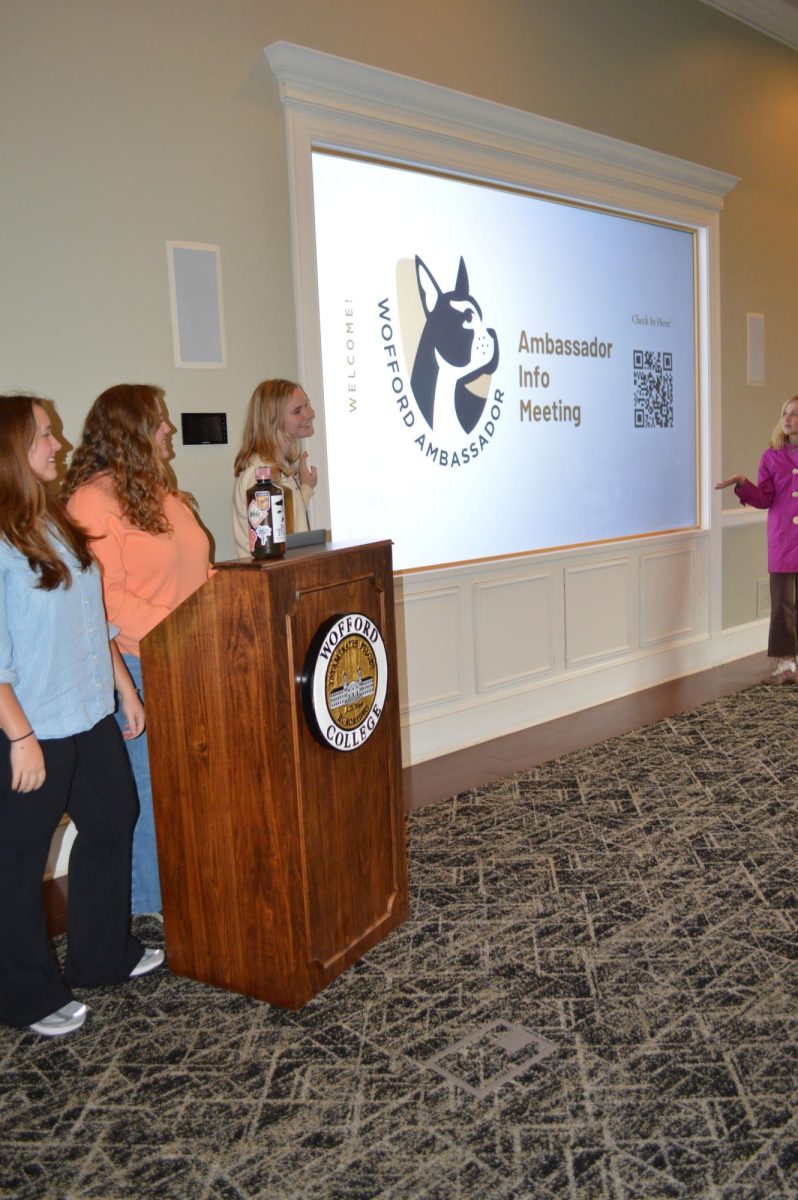Staff writer shares her experience with quarantine protocol
After five months of living with my parents, I was so excited to be a college student again. My parents came to help me move into my new dorm, and as soon as the last box was unloaded, I practically shoved my mom and dad into their car with a cheerful wave. At last, I had regained my independence and got to live with all my friends again.
Of course, I knew that this semester was going to be different, and I was prepared to adapt to the changes Wofford put in place as a result of the coronavirus pandemic. I always wore a mask, kept social gatherings to a minimum, washed my hands obsessively and routinely filled out the symptoms tracker.
However, no good deed goes unpunished: almost three weeks after I moved back to Wofford, I was back on my parents’ doorstep in Charlotte with a mask on my face and my bags in my hands.
A few hours earlier, I learned that I had direct exposure to COVID-19 and immediately reported it on the Wellness Center portal. Within minutes, I received a message from the Wellness Center staff requesting more information about my exposure as well as my phone number in case they needed to contact me.
At this point, I thought that, at most, I would be asked to be tested for COVID-19 and would be sent home if my results came back positive. But after another minute or so, I got a call from the Wellness Center telling me to go home immediately.
Because my home is about an hour and a half away, it was no issue for me to return. For other students, though, home is much farther away and the school has to put them in Wofford-controlled housing. Some students are quarantined in on-campus apartments while others are placed off-campus. Rumors swirled that some students were told to isolate themselves in their dorm rooms.
The Wofford protocol for COVID-19 exposure relies heavily on the symptoms tracker; in some cases, too heavily. Students must report being exposed to the virus in order to be contacted by the Wellness Center and then be quarantined. For reference, Wofford’s Wellness Center follows the CDC’s definition of exposure as being within 6 feet of someone who tests positive for at least fifteen minutes in the past two to three days.
In addition to the many loopholes students can find within the definition of exposure detailed in the symptoms tracker, this means that students can knowingly have direct exposure to someone who tests positive and still be walking around campus if they don’t report it. Think about this the next time someone removes their mask while running on the treadmill next to yours, or the next time you jump in the car with someone, or when you hear about an illicit party being planned.
The Wellness Center practices contact tracing for positive cases but leaves room for students to find loopholes there too. I spoke with a student who tested positive for COVID-19 and was placed into quarantine. The Wellness Center requested from them a list of all the people they had come into contact with since their estimated exposure date. All of the people on this list were ordered to go into quarantine. However, some students may not accurately report who they’ve been in contact with, whether intentional or not.
Another student I spoke to had indirect exposure via their roommates’ direct exposure. Waiting for the roommates’ test results was nerve-wracking and the student felt unsafe waiting at school after potentially being exposed. The student said, “They are not showing consistency. They aren’t sending everyone that has contact with someone who tests positive home.”
This raises the question: how “direct” must direct exposure be considered in order to keep the community healthy?
I tested negative for the virus and will be able to return to campus two weeks after my exposure date. I feel extra safe coming back because of the Wellness Center’s new policy requiring quarantined students to test 7-9 days after initial exposure. Students must now test negative in order to re- turn to campus.
Overall, I’m pleased with how the Wellness Center handled my exposure and time in quarantine. I was amazed at how quickly they reached out to me after I reported being exposed, and multiple people from the office messaged me to see how I was doing throughout the two weeks. My professors have all been extremely accommodating and understanding as well.
That said, quarantine is not fun and I can imagine it’s even worse when students must quarantine away from their family and the comforts of home. The good news is that everything that Wofford has told us to do in order to stay safe really works. Wash your hands, wear a mask, stay six feet apart from others and refrain from gathering in enclosed spaces like cars or dorm rooms, and quarantine can be avoided.



























